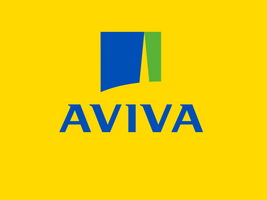Title Page
-
Conducted on
-
Prepared by
-
Location
-
To view our Loss Prevention Standard that supports this checklist, please view the following link: https://connect.avivab2b.co.uk/documents/view/aviva_protecting_vulnerable_road_users_lps.pdf
Policy and Procedures
-
1. Have you identified control measures to protect your drivers and VRU in your driving at work risk assessments?
-
2. Do you include protecting VRU in your driving at work policy?
-
3. Have you communicated your driving at work policy to all relevant employees?
-
4. Do you include safety guidance for your drivers on protecting VRU in the following driver handbooks:<br><br>• Commercial vehicles?<br>• Company cars?<br>• Grey fleet?<br>• Cycle for work schemes?
-
5. Does your drivers' handbook safety guidance on VRU include:<br><br>• Responsibilities to other road users including VRU?<br>• Being diligent to VRU in town centres, residential areas and near schools?<br>• Importance of checking blind spots?<br>• Undertaking safe manoeuvres?<br>• Journey planning?<br>• Awareness of new road layouts?<br>• Awareness of E-scooter pilots?
-
6. Have you received written confirmation that your employees have read and understood the company driver handbooks?
Route Manning
-
7. When planning your commercial vehicles' routes and delivery points, do you take into consideration how you can reduce the potential interaction with VRU?
Driver Training and Awareness
-
8. Do you provide training and awareness to drivers about VRU? This can include:<br><br>• Importance of safe manoeuvring?<br>• Checking blind spots?<br>• How to manoeuvre safely?<br>• Reversing into parking spaces?<br>• Safe distance to maintain when overtaking cyclists?<br>• Safe use of blind spot devices?<br>• E-scooters trials?<br>• New road layouts including new cycle paths?
Vehicle Selection
-
9. When purchasing/leasing commercial vehicles are the following features included as part of the selection process:<br><br>• Minimising blind spots?<br>• Blind spot minimising technology?<br>• Protecting vulnerable road users?
-
10. When hiring commercial vehicles are minimising blind spots and protecting VRU considered?
-
11. When purchasing/leasing company cars/vans are the following features included as part of the selection process:<br><br>• Minimising blind spots?<br>• Blind spot minimising technology?<br>• Features designed to minimise harm to VRU (Cars Euro NCAP rating, e.g. VRU Protection rating and Safety Assist score)
Road Traffic Collision Data
-
12. Are all RTC investigated?
-
13. Is the RTC investigation data analysed for<br><br>• Trends?<br>• Effectiveness of training?<br>• Vehicle appropriateness for the route?<br>• Correct use of blind spot aids and technology?
Engaging the Community
-
14. Do you engage with local community road safety awareness schemes?
-
15. Are you involved in the Exchanging Places schemes to raise VRU awareness of blind spots in commercial vehicles?
Completion
-
Additional Comments
-
Completed by: (Name and Signature)
-
Please Note:
This document contains general information and guidance only and may be superseded and/or subject to amendment without further notice. Aviva has no liability to any third parties arising out of ARMS' communications whatsoever (including Loss Prevention Standards), and nor shall any third party rely on them. Other than liability which cannot be excluded by law, Aviva shall not be liable to any person for any indirect, special, consequential or other losses or damages of whatsoever kind arising out of access to, or use of, or reliance on anything contained in ARMS' communications. The document may not cover every risk, exposure or hazard that may arise and Aviva recommend that you obtain specific advice relevant to the circumstances.














